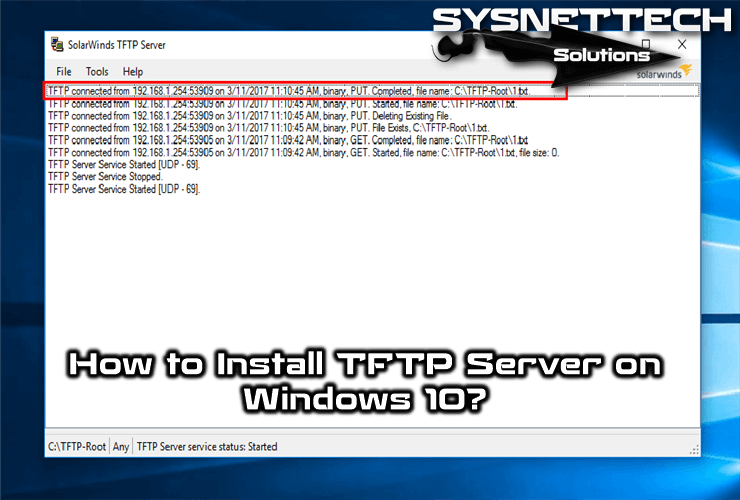

Anyone who can access the server's IP address / UDP port 69 can download all the files in the data folder and sub-directories. IMPORTANT: TFTP has no built-in security (authentication or otherwise).

The Simple DNS Plus log (Active Log View and log files) will show the request:

Note that in recent Windows version this first needs to be enabled from the Windows Control Panel / Programs & Features / Turn Windows features on or off / TFTP client. To test your setup, you can use the TFTP command line tool. The maximum number of times a data block will be resent (after timeout or repeat request from client). When the timeout expires, the last data block will be resent.Ĭlients may request a different timeout value ("timeout" option). How long the server should wait for acknowledgeent that a client received the last data block. You may need to adjust this setting if you network limits UDP packet size. The default block size is 512, but clients may request a larger block size ("blksize" option). The maximum size (in bytes) of individual data blocks. The maximum number of simultaneous connections (file transfers).

IMPORTANT: Make sure to specify a folder on a local harddisk as the service is not be able to access network shares. The local IP address that the plug-in should listen for incoming requests on (UDP port 69). On the "Plug-In Settings" tab, enter the following settings (explained below the image): TFTP is typically used in combination with DHCP to enable PXE / diskless booting of PCs, provisioning IP phones, etc.Īn example of this is provided in KB73 - How to serve a network based Debian Linux installation with Simple DNS Plus. It supports the "blksize", "timeout" and "tsize" options (implements RFC1350, 2347,2348, and 2349). This plug-in provides TFTP (Trivial File Transfer Protocol) server functionality.


 0 kommentar(er)
0 kommentar(er)
